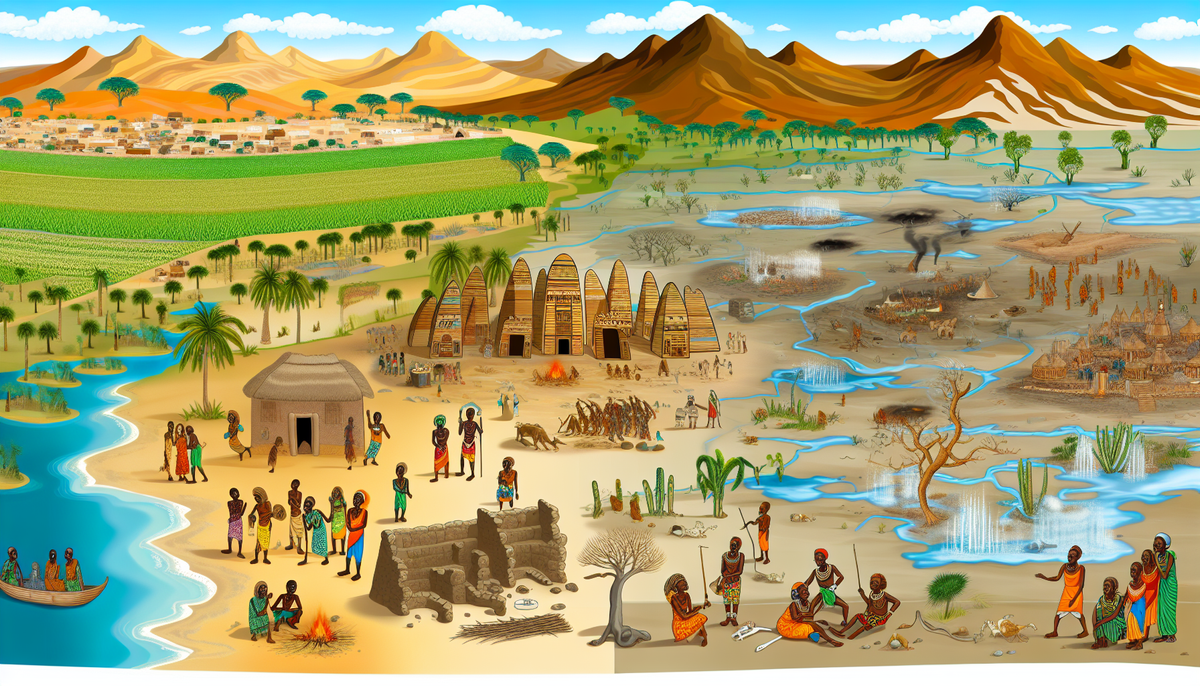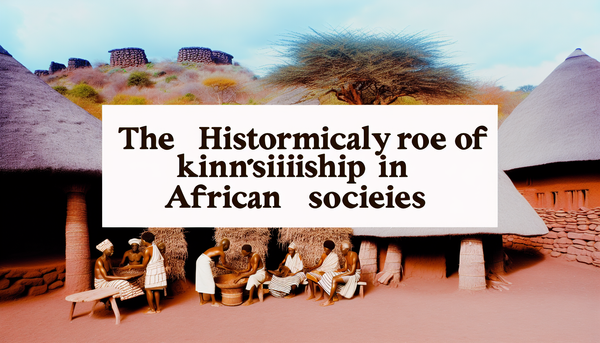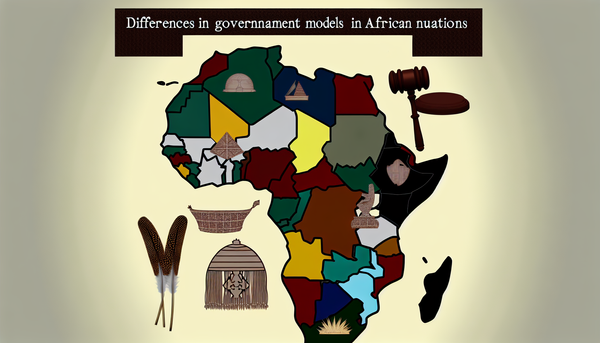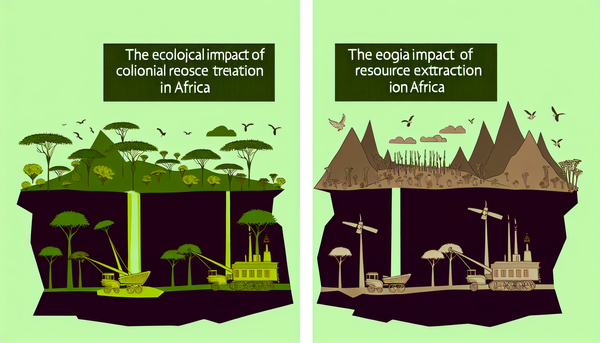The Impact of Climate Change on Historical African Societies

Examining Environmental Shifts in Pre-Colonial Africa
Pre-colonial Africa underwent significant environmental shifts that profoundly influenced its diverse societies. Changes in climate, such as oscillating rainfall patterns and temperature fluctuations, directly impacted agricultural productivity and resource availability. For instance, periods of increased rainfall led to fertile lands that supported the rise of complex societies, including the empires of Mali and Great Zimbabwe. Conversely, prolonged droughts often resulted in food shortages, forcing communities to adapt their agricultural practices or migrate to more hospitable areas.
The variations in climate not only affected farming but also shaped trade routes and cultural exchanges. For example, rivers like the Niger and Zambezi were crucial for transportation, connecting various regions and facilitating trade. However, environmental changes could disrupt these networks, leading to economic decline and societal transformation.
Additionally, the impacts of climate were often recorded in oral histories and cultural narratives, providing insight into how societies understood and responded to their changing environments. By examining these environmental shifts, we gain a clearer understanding of the resilience and adaptability of historical African societies, revealing their sophisticated relationship with nature long before European colonization. This perspective is essential for appreciating the depth of Africa's historical narratives amid the ever-changing climate landscape.
The Role of Droughts and Famines in Societal Transformation
Droughts and famines have historically played pivotal roles in transforming societies across Africa. Extended periods of insufficient rainfall often led to crop failures, resulting in widespread food shortages. Such crises did not merely threaten survival; they prompted significant social upheaval and changes in political structures. During times of famine, communities were compelled to reassess their resource management and distribution strategies, leading to shifts in power dynamics.
For instance, in many societies, drought-induced scarcity could result in stronger leadership as charismatic leaders emerged to unite people under coherent survival strategies, often facilitating the development of centralized political systems. Conversely, failures in governance during crises could lead to clan fragmentation and social conflict, as competition for dwindling resources sparked tensions.
Moreover, repeated droughts often drove migration, as families and entire communities sought more fertile lands. This movement of people not only reshaped demographic patterns but also allowed for the exchange of cultural practices, ideas, and technologies. In essence, droughts and famines served as catalysts for resilience and innovation, compelling societies to adapt in the face of adversity and ultimately leading to significant transformations in social organization, culture, and governance throughout pre-colonial Africa.
Effects of Rising Temperatures on Agricultural Practices
Rising temperatures have notably affected agricultural practices throughout history, particularly in various African societies where agriculture is predominantly rain-fed. As climates warmed, farmers faced challenges in maintaining crop yields, leading to adaptations in their cultivation methods. Higher temperatures often resulted in increased evaporation rates, diminishing soil moisture and altering irrigation needs. Consequently, traditional farming techniques, honed over generations, required significant adjustments to cope with the impacts of prolonged heat.
To combat these changes, some communities began to diversify their crop choices, opting for heat-resistant varieties that could better withstand fluctuating climates. This diversification not only helped ensure food security but also fostered a deeper understanding of sustainable agricultural practices. Farmers increasingly turned to intercropping and shifting cultivation methods to maximize land use and minimize the impacts of temperature shifts.
In addition to crop adaptation, rising temperatures also influenced the timing of planting and harvesting cycles. Farmers had to become adept at predicting weather patterns and adapting their schedules to respond to these variations. Such transformations reveal the resilience and innovative spirit of African agricultural societies, showcasing how they navigated environmental changes to sustain their livelihoods amid the challenges posed by a warming climate.
Case Studies: Ancient Civilizations and Ecological Shifts
Ancient African civilizations provide compelling case studies illustrating the profound effects of ecological shifts on societal development. One noteworthy example is the Kingdom of Kush, located along the Nile in modern-day Sudan. This civilization thrived due to the fertile lands nurtured by the river, allowing for extensive agriculture. However, shifts in rainfall patterns around 300 BCE led to soil degradation and crop failures, prompting the Kushites to adapt by utilizing new agricultural techniques, such as irrigation and crop rotation. Such adaptations enabled them to sustain their civilization despite environmental changes.
Another significant case is Great Zimbabwe, a powerful city-state from the 11th to the 15th century. Initially flourishing due to its control over trade routes and cattle herding, the civilization faced ecological stress due to overgrazing and deforestation. As resources dwindled, the society had to modify its agricultural practices and trade relations. Eventually, these environmental pressures contributed to its decline, illustrating the interconnectedness between ecological health and social stability.
These case studies highlight the dynamic relationship between ancient African civilizations and their environments, emphasizing how ecological shifts prompted adaptive strategies that ultimately shaped historical trajectories. Understanding these connections deepens our appreciation for the resilience of societies facing climatic challenges.
Water Scarcity and Its Influence on Migration Patterns
Water scarcity has historically been a significant driver of migration patterns across Africa, profoundly affecting communities and their socio-economic landscapes. As populations grew and climate variability intensified, access to fresh water became increasingly limited, compelling individuals and families to seek more sustainable living conditions. In regions where rainfall became erratic or drying up, such as parts of the Sahel and East Africa, communities faced acute challenges in agricultural productivity and livestock management.
This scarcity often forced people to migrate in search of water resources, leading to the establishment of new settlements in more fertile and resource-rich areas. For instance, during periods of drought, the movement of pastoralist communities in search of grazing lands for their livestock not only resulted in shifts in demographics but also fostered cultural exchanges between groups. These migrations could lead to increased tensions over resource competition, altering local power dynamics and instigating conflict.
Conversely, successful migrations could introduce new agricultural practices and technologies, enriching the social fabric of receiving communities. Ultimately, water scarcity serves as a powerful reminder of the interplay between environmental conditions and human movement, illustrating how ecological challenges have shaped migration patterns throughout Africa's history and continue to do so today.
Insights from Archaeological Findings on Climate Adaptations
Archaeological findings across Africa have provided critical insights into how ancient societies adapted to climate changes over millennia. Excavations at sites like Olduvai Gorge in Tanzania reveal evidence of early human responses to changing environments, including the development of sophisticated hunting and gathering strategies as climates fluctuated. These adaptations were essential for survival, illustrating the ingenuity of early humans in responding to ecological pressures.
Additionally, discoveries in areas such as the East African Rift have unearthed remnants of ancient agricultural practices, shedding light on how communities transitioned from foraging to farming. Pollen analysis from sediment cores indicates how ancient populations adapted their cultivation techniques in response to evolving climatic conditions, such as increasing temperatures and shifting rainfall patterns. Such evidence underscores the importance of resilience and innovation in agricultural practices, from the introduction of drought-resistant crops to enhanced irrigation techniques.
Furthermore, findings from Great Zimbabwe and other historical sites highlight the socio-political implications of climate adaptations. As communities developed new agricultural methods, their social structures evolved to manage resources more effectively, demonstrating a complex interplay between environmental changes, social organization, and cultural development. These archaeological insights deepen our understanding of humanity’s long-standing relationship with climate and the adaptive strategies that have shaped societies throughout history.
Long-term Environmental Changes and Cultural Resilience
Long-term environmental changes have profoundly shaped the cultural resilience of societies across Africa. Over centuries, varying climate conditions have prompted communities to innovate and adapt, demonstrating remarkable flexibility in the face of ecological challenges. For instance, during the African Humid Period, approximately 14,000 to 5,000 years ago, the Sahara region was a lush and fertile landscape. As conditions shifted and the Sahara began to dry, populations migrated toward more sustainable areas, such as the Nile Valley and sub-Saharan Africa, leading to the establishment of complex agricultural societies.
These migrations often enriched cultural exchanges, with communities sharing agricultural techniques, belief systems, and technologies, which bolstered their resilience. In regions like the Great Lakes, archaeological findings show that societies adapted to changing fish stocks and climatic fluctuations through diversified subsistence strategies, including hunting, fishing, and agriculture, resulting in dynamic cultural practices that reflected environmental realities.
Moreover, traditional knowledge—passed down through generations—has played a critical role in navigating environmental uncertainties. This includes practices such as crop rotation, water conservation, and sustainable land management. These cultural adaptations underscore the interconnectedness of environmental changes and social resilience, highlighting how communities have successfully transformed challenges into opportunities for growth and continuity throughout history.



